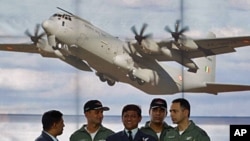According to a new SIPRI report, that increase is on the rise.
According to its data the average volume of worldwide arms transfers during the four years between 2006 and 2010 was 24 percent higher than during the previous four years.
The Asia-Pacific region received the most arms imports, 43 percent of the total.
All four of the largest importers of conventional weapons were in Asia: India, China, South Korea, and Pakistan.
India topped China as the largest single arms importer. Between 2006 and 2010 it received almost 10 percent of the total volume of international transfers of “major conventional weapons”.
Mark Bromley, a senior researcher at the Stockholm International Peace Research Institute, says India spent just under $40 billion on defense in 2009 in order to modernize its armed forces and protect itself against perceived regional threats, namely from China and Pakistan.
"India is in the midst of a very ambitious re-armament program. It is devoting large sums of money to the acquisition of a range of military equipment from abroad, most notably fighter aircraft but also naval systems and a number of other types of equipment and that looks set to continue."
According to the Stockholm International Peace Research Institute the United States exports the most military equipment. It accounted for 30 percent of global arms exports in 2006-10.
Bromley says there is serious competition taking place between arms exporters for sales to Asia, the Middle East, North Africa and Latin America.
Many European governments, he says, have cut back their spending on defense. Instead, they are giving their domestic arms manufacturers support for overseas sales. But he says overseas sales can sometimes come back to haunt governments.
Britain, for example, has come under a wave of criticism recently for arms sales to governments that cracked down on pro-democracy protesters.
"We have seen a bit of that recently with Libya but also other countries in the Middle East. Of course any process of export promotion has to be kept separate from the political process of assessing whether or not an armed export license should be granted or denied. However, as the pressure to increase exports rises, we could well see cases where that line becomes blurred."
The Stockholm International Peace Research Institute was founded more than four decades ago with the stated aim of bringing more transparency to the international arms trade.







